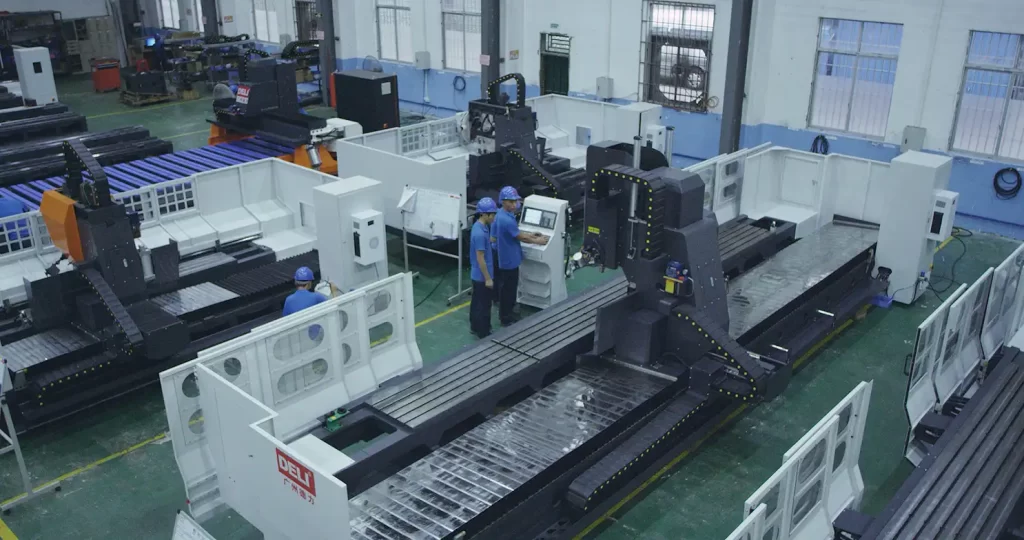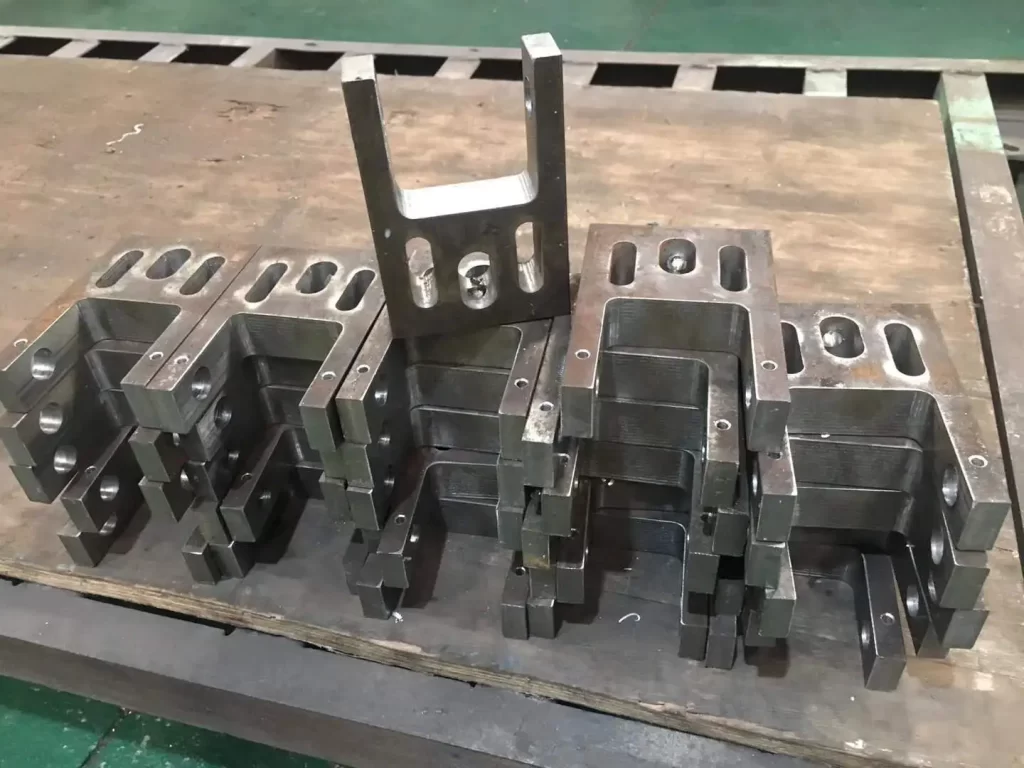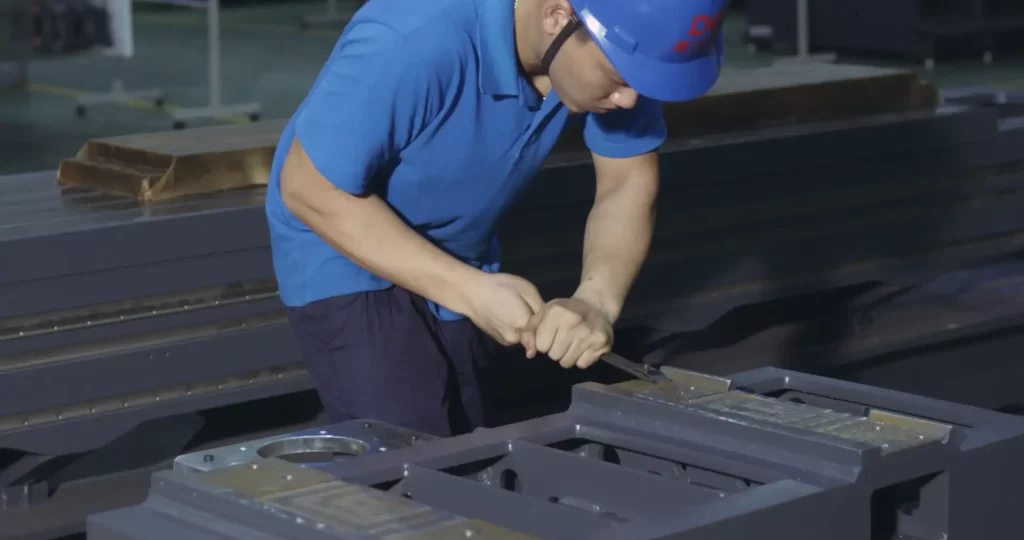Choosing the right CNC equipment for automotive parts processing
Choosing the right automotive parts processing equipment is crucial for achieving precision, efficiency, and cost-effectiveness in automotive manufacturing. From micrometer-level tolerances in engine blocks to intricate gear profiles in transmissions, CNC machines are indispensable for meeting diverse production needs. This guide offers a comprehensive framework for CNC equipment selection, covering needs assessment, equipment types, key considerations, and optimization strategies to help manufacturers identify the best CNC equipment for automotive parts manufacturing, boosting efficiency and quality in automotive component processing.
1. Assessing Needs for Automotive Component Processing

1.1 Types of Automotive Parts and Precision Manufacturing Requirements
Automotive component processing involves a wide range of parts, each with specific demands for high-precision automotive machining equipment. Here’s a breakdown of key categories and their requirements:
Engine Components (e.g., Cylinder Blocks, Crankshafts):
- Precision: Micrometer-level tolerances (e.g., ±5 µm) for exacting high-precision machining.
- Surface Finish: Ra 0.8–1.6 to meet stringent automotive manufacturing standards.
- Characteristics: Complex geometries, multi-hole systems, and high-strength materials.
Transmission Components (e.g., Gears, Shafts):
- Precision: Tight tolerances requiring specialized automotive gear machining equipment.
- Surface Finish: Ra ≤ 0.4 for enhanced wear resistance.
- Characteristics: Intricate gear profiles and high-hardness materials, necessitating advanced CNC machines.
Chassis Components (e.g., Suspensions, Wheel Hubs):
- Precision: Millimeter-level tolerances, suitable for high-volume automotive component processing.
- Characteristics: Large-scale production with diverse materials like steel and aluminum alloys.
Material Impacts on Processing:
- Steel/Cast Iron: High hardness demands robust automotive parts processing equipment.
- Aluminum Alloys: Lightweight but prone to deformation, requiring high cutting speeds with CNC machines.
- Composites (e.g., Carbon Fiber): Susceptible to delamination, needing low-vibration machining and specialized tools.
1.2 Production Scale and Batch Size
The scale of production shapes the choice of CNC machines for automotive manufacturing:
Small-Batch Customization:
- Features: Diverse parts, low volumes, and frequent changeovers.
- Equipment Needs: High flexibility, universal fixtures, and quick setup.
- Suitable Equipment: General-purpose CNC lathes or milling machines for versatile automotive component processing.
Large-Scale Production:
- Features: Single or limited part types, high volumes, and a focus on efficiency.
- Equipment Needs: Fast cycle times, automated loading/unloading, and minimal operator intervention.
- Suitable Equipment: Machining centers with automated pallet changers for high-precision automotive machining.
Mixed Production:
- Features: Balances flexibility and efficiency.
- Equipment Needs: Modular designs, rapid adjustments, and compatibility with high-volume automotive parts processing equipment.
1.3 Processing Complexity
Complex parts require sophisticated automotive parts processing equipment:
- Complex Surfaces and Deep-Hole Machining:
- Challenges: Curved surfaces in engine blocks and deep, small-diameter holes.
- Equipment Needs: Multi-axis capabilities (e.g., 5-axis machining centers) for CNC machining for engine components, high rigidity, and efficient cooling systems.
- Gear Machining:
- Challenges: Precise gear profiles and superior surface quality.
- Equipment Needs: CNC grinders tailored for automotive gear machining equipment.
- Special Materials:
- Heat-Treated Materials: High hardness requires robust CNC machines and carbide tools.
- Composites: Prone to delamination, needing low-vibration designs and custom fixtures.
2. CNC Equipment Types and Applications
The table below outlines key automotive parts processing equipment types, their applications, advantages, and limitations:
| Equipment Type | Applications | Advantages | Limitations | Typical Uses |
|---|---|---|---|---|
| CNC Lathe | Shafts, discs | High-precision rotational machining, efficient | Limited for complex geometries | Crankshafts, wheel hubs |
| CNC Milling Machine | Flat surfaces, curves, holes | High flexibility for complex parts | Lower machining efficiency | Cylinder blocks, molds |
| Machining Center | Multi-surface, multi-process parts | Multi-axis, single-setup processing | High equipment cost | Transmission housings |
| CNC Grinder | High-precision surfaces | Exceptional surface quality, micrometer precision | Narrow machining scope | Gears, bearings |
| CNC EDM/Wire Cutting | Complex shapes, hard materials | Ideal for high-hardness, intricate shapes | Slow machining speed | Molds, complex parts |
| CNC Gear Hobbing/Grinding | Gears | High-precision gear profile machining | Highly specialized | Transmission gears |
| CNC Laser Cutting | Thin plates, prototypes | Fast, precise | Limited material thickness | Body panels |
3. Key Considerations for CNC Equipment Selection
3.1 Precision and Stability
- Machining Precision: Must achieve IT5–IT7 tolerances for accurate automotive component processing.
- Repeatability: Ensures consistency across batch production.
- Thermal Stability: Maintains high-precision machining during prolonged operation.
- Vibration Control: Prevents degradation of surface quality.
3.2 Flexibility and Scalability
- Multi-Axis Configurations: Select 3-, 4-, or 5-axis CNC machines based on part complexity for high-precision automotive machining.
- Tool Magazine Capacity: Enables multi-process machining with rapid tool changes.
- Fixture Compatibility: Supports diverse part clamping needs and quick changeovers.
3.3 Production Efficiency
- Spindle Speed and Feed Rate: Drive machining speed and efficiency in automotive parts processing equipment.
- Cutting Capability: Must align with material hardness for efficient processing.
- Automation Features: Automated loading/unloading and pallet changers enhance high-precision automotive machining efficiency.
3.4 Cost and Return on Investment (ROI)
- Initial Cost: Investment in cost-effective CNC solutions for automotive parts.
- Operating Costs: Tool wear and energy consumption.
- Maintenance Costs: Spare parts and service expenses.
- ROI Evaluation: Balances productivity gains with upfront costs.
3.5 Brand and After-Sales Support
- Brand Reputation: Choose trusted brands for reliable automotive parts processing equipment.
- After-Sales Support: Ensures timely spare parts availability, responsive technical support, and quality service.
4. CNC Equipment Selection Process for Automotive Parts

A structured approach to how to choose CNC machines for automotive production includes:
4.1 Needs Assessment for Automotive Parts Processing
- Process Mapping: Identify machining steps, such as multi-axis requirements for CNC machining for engine components.
- Key Parameters: Define tolerances (micrometer-level) and surface finish (Ra values).
- Material Analysis: Evaluate material properties (steel, aluminum, composites) and their impact on CNC machines.
- Production Scale: Determine whether small-batch customization or high-volume production.
4.2 Equipment Screening
- Type Matching: Select automotive parts processing equipment based on part requirements, such as automotive gear machining equipment for transmission components.
- Supplier Comparison: Assess performance metrics (spindle speed, feed rate, tool magazine capacity), stability, and automation features.
4.3 Trial Machining
- Part Testing: Verify tolerances and surface quality (e.g., gear profile accuracy, surface smoothness).
- Stability Testing: Evaluate thermal deformation and operational ease during extended runs.
- Data Analysis: Use trial data to assess high-precision automotive machining performance.
4.4 Decision-Making
- Technical Evaluation: Confirm equipment meets automotive component processing requirements.
- Cost Analysis: Calculate total costs (procurement, operation, maintenance) for cost-effective CNC solutions for automotive parts.
- Service Consideration: Review supplier response times and spare parts availability.
- Final Plan: Develop a strategy for selecting and implementing the best CNC equipment for automotive parts manufacturing.
5. Implementation and Optimization Strategies for CNC Machines

5.1 Equipment Calibration and Process Optimization
- Parameter Tuning: Optimize spindle speed and feed rate to balance efficiency and quality in high-precision automotive machining.
- Custom Tools and Fixtures: Design specialized tools for unique materials (e.g., composites) or complex parts to reduce defects.
5.2 Automation and Smart Integration
- Automation Systems: Deploy automated loading/unloading and pallet changers to boost automotive parts processing equipment efficiency.
- Monitoring and Diagnostics: Use tool monitoring and fault detection for real-time issue resolution.
- System Integration: Connect with MES and ERP systems to streamline production scheduling and material management.
5.3 Workforce Training and Technical Support
- Operator Training: Ensure proficiency with CNC machines for automotive manufacturing, process standards, and troubleshooting.
- Technical Partnerships: Build long-term relationships with suppliers for timely support and software updates.
5.4 Data-Driven Management
- Data Collection: Use sensors to monitor production efficiency and part quality (e.g., Ra values).
- Predictive Maintenance: Leverage analytics to predict equipment failures and minimize unplanned downtime.
6. Conclusion
Selecting the best CNC equipment for automotive parts manufacturing is a multifaceted process that requires careful evaluation of part types, production scales, and machining complexities. By following this structured CNC equipment selection process for automotive parts, manufacturers can assess automotive parts processing equipment performance, cost-effectiveness, and after-sales support to choose the most suitable CNC machines. This approach ensures enhanced efficiency, precision, and quality in automotive component processing, driving long-term success in the automotive manufacturing industry.



